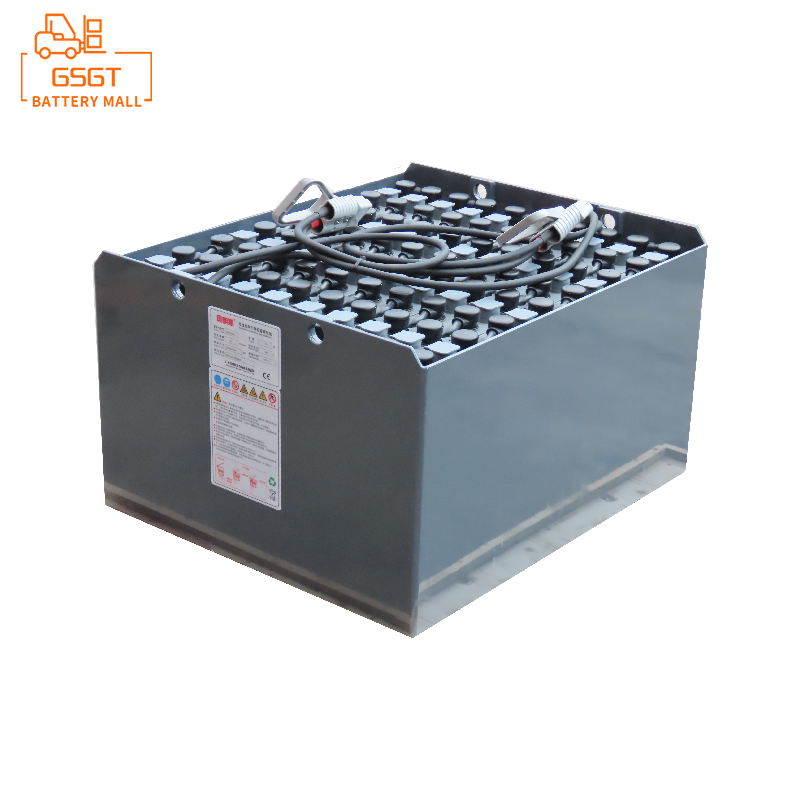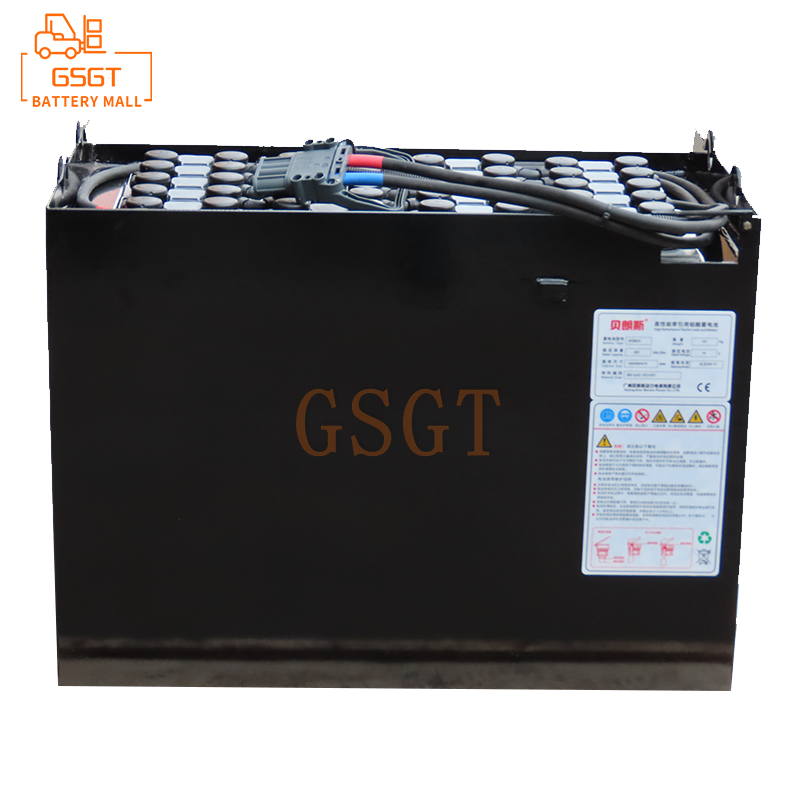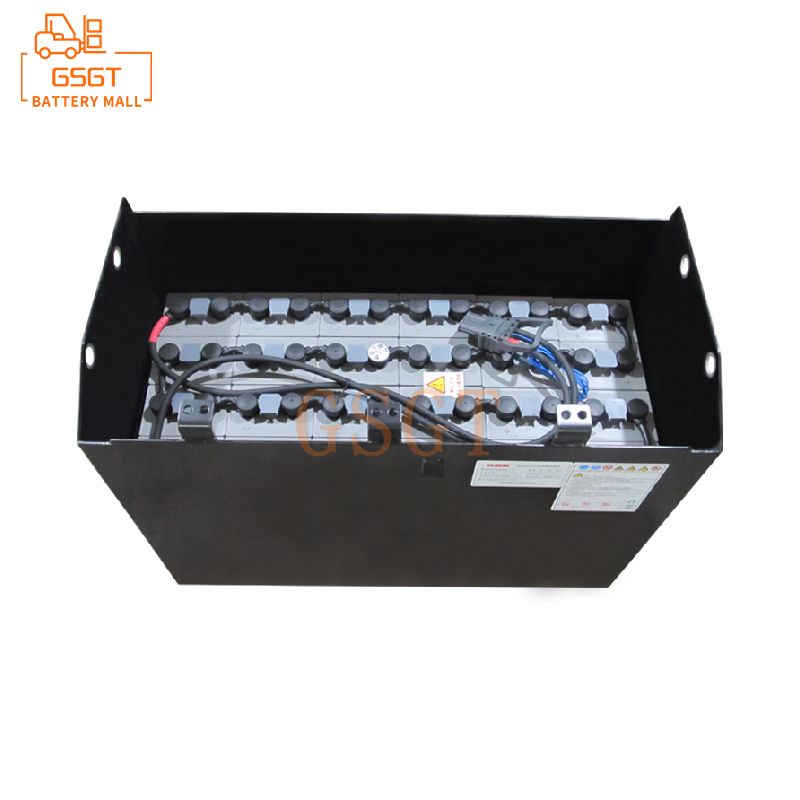Time:2025-07-28 11:30:18
Browse:638
In the daily use and maintenance of forklifts, reversing the positive and negative terminals of lead-acid batteries is an operational mistake that seems simple but may lead to serious consequences. Due to the large capacity and high voltage of forklift batteries, the current impact generated when the positive and negative terminals are reversed can cause multiple damages to the battery itself and the forklift's circuit system. This article will provide a detailed analysis of the specific consequences after reverse connection, scientific remedial measures, and answer several questions that users are most concerned about.
1. The direct consequences of reversing the positive and negative terminals of lead-acid batteries in forklifts
(1) The internal structure of the battery is damaged
The core working principle of lead-acid batteries is to store and release electrical energy through the chemical reaction between the positive and negative plates. There are essential differences in the materials and active substances of the positive and negative plates. When the positive and negative poles are connected in reverse, the direction of the current reverses, which will cause the plates to experience a "polarity reversal" phenomenon. The negative plate is forced to undertake the oxidation reaction of the positive plate, with lead dioxide rapidly forming on its surface, while the positive plate undergoes a reduction reaction and gradually transforms into spongy lead. This abnormal reaction will cause a large amount of active material on the plates to fall off and deposit at the bottom of the battery, creating a short-circuit hazard. At the same time, the battery capacity will drop sharply. In severe cases, irreversible damage such as shell bulging and leakage may occur.
(2) Chain faults in the circuit system
The electronic control system, motor, charger and other equipment of the forklift are all designed for DC power supply. Reversing the polarity will directly disrupt the circuit balance. When the charger is connected in reverse, the output voltage will superimpose on the actual voltage of the battery, causing a sudden increase in current in the circuit, which may burn out components such as the rectifier bridge and capacitors inside the charger. As a core power component, when the motor is connected in reverse, it may reverse in direction. At the same time, the stator winding may burn out due to overcurrent, which is manifested as abnormal noise, abnormal speed or even complete failure of the motor. In addition, the low-voltage electrical appliances of forklifts such as lights and instrument panels may also be punctured due to incorrect polarity, causing the entire vehicle's circuit to fail.
(3) Escalation of security risks
In the reverse connection state, the chemical reactions inside the battery become disordered, releasing excessive hydrogen and oxygen. When these gases mix to a certain concentration, they are highly likely to explode upon encountering an open flame. Meanwhile, the high temperature generated by a short circuit in the circuit may ignite the insulation layer of the wires, causing a vehicle fire. If the operator fails to notice in time after reversing the connection and continues to forcibly start the vehicle, it may also cause the battery plates to fall off and block the electrolyte channels, resulting in local overheating and further intensifying the safety hazard.
2. Scientific Remedial Measures and Operational Procedures
(1) Emergency response
Once it is found that the positive and negative terminals are reversed, the charger or the main switch of the vehicle should be immediately disconnected to stop the current input. At this time, it is necessary to keep the site well-ventilated, avoid open flames from approaching, and prevent the mixed gas released by the battery from causing danger. If leakage has occurred, acid-resistant gloves and goggles should be worn. Cover the leaked electrolyte with dry sand and soil. Do not directly rinse with water to prevent corrosion damage caused by sulfuric acid splashing.
(2) System detection
Battery inspection: Observe whether there are any bulges or leaks on the battery's appearance, and measure the open-circuit voltage. If the voltage is lower than 1.8V or the voltage difference between individual cells exceeds 0.2V, it indicates that the plates have been severely damaged. At the same time, check the density of the electrolyte. After reverse connection, the density is usually abnormally low.
Circuit inspection: Use a multimeter to test the forklift's circuit section by section, with a focus on key components such as the controller, motor windings, and fuses. If the fuse is found to be blown, a new one of the same specification should be replaced before conducting subsequent tests to avoid secondary damage caused by blind power-on.
(3) Targeted repair
Battery repair: For batteries that are slightly reversed and have not suffered physical damage, they can be correctly connected first. Then, use a small current for slow charging until the voltage returns to normal, and then perform a discharge cycle. Repeat this 2-3 times to activate the plate activity. If the battery has bulged, leaked or the plates have fallen off, it needs to be scrapped. When replacing a new battery, pay attention to the polarity marking to ensure that the positive and negative poles correspond to the vehicle's wiring.
Circuit repair: When replacing burned electrical components, original factory parts must be selected to ensure compatibility. When repairing a motor, it is necessary to disassemble and check the insulation condition of the windings. If the insulation layer is carbonized, it needs to be rewound. If the controller is damaged, it requires professional personnel to carry out chip-level repair or complete replacement. After the repair, a no-load test should be conducted to observe whether the motor rotation direction, instrument display, etc. have returned to normal.
3. Frequently Asked Questions
Question: Can the lead-acid battery of a forklift still be used after the positive and negative terminals are reversed?
Answer: It must not be used any longer. Even if the reverse connection time is short, the plates inside the battery have already suffered irreversible chemical damage. Continuing to use it will lead to rapid capacity decline, and at the same time, the circuit system may collapse at any time due to hidden faults, increasing safety risks. The correct approach is to immediately halt the operation, conduct a comprehensive inspection in accordance with the remedial measures, and then decide whether to repair or replace it.
(2) Q: How can one avoid reversing the positive and negative poles during daily operations?
Answer: Three preventive measures can be taken: First, clearly mark the positive and negative terminal symbols (" + ", "-") on the battery terminals and cables, and use different colors to distinguish them (red is commonly used for the positive terminal and black for the negative terminal); Second, when connecting, first confirm the polarity marking of the charger or vehicle's circuit. After checking for accuracy, proceed with the operation. Third, regularly train operators, emphasize the hazards of reverse connection, and establish a "double-check after wiring" system, especially after replacing batteries or repairing circuits, special attention should be paid to inspection.
(3) Q: Will the service life of the repaired battery and circuit be affected?
Answer: The service life of the repaired equipment depends on the degree of damage. If the reverse connection time is short and dealt with promptly, the battery and circuit can restore over 80% of their original performance, and the service life can be shortened by approximately 20% to 30%. If the reverse connection time exceeds 30 minutes or obvious physical damage has occurred, even if it is repaired, the battery capacity will drop significantly and the aging resistance of the circuit components will decline. It is recommended to prioritize the replacement of key components to ensure the stability of forklift operation.
4. Summary
Reversing the positive and negative terminals of a forklift's lead-acid battery may seem like a simple operational mistake, but it can trigger a chain reaction ranging from equipment damage to safety accidents. In daily operations, it is necessary to prevent reverse connection problems through standardized procedures, clear identification, regular training and other means. In the event of reverse connection, the principle of "power off first, then test, and finally repair" should be followed to avoid blind operation that may expand losses. For severely damaged batteries and circuit components, do not force them to be repaired to save costs. They should be replaced in a timely manner to ensure the safety and efficiency of forklift operation.

$3160

$8340

$1790

$2290

MESSAGE
Professional And Efficient
Security
Affordable Price
Professional Services